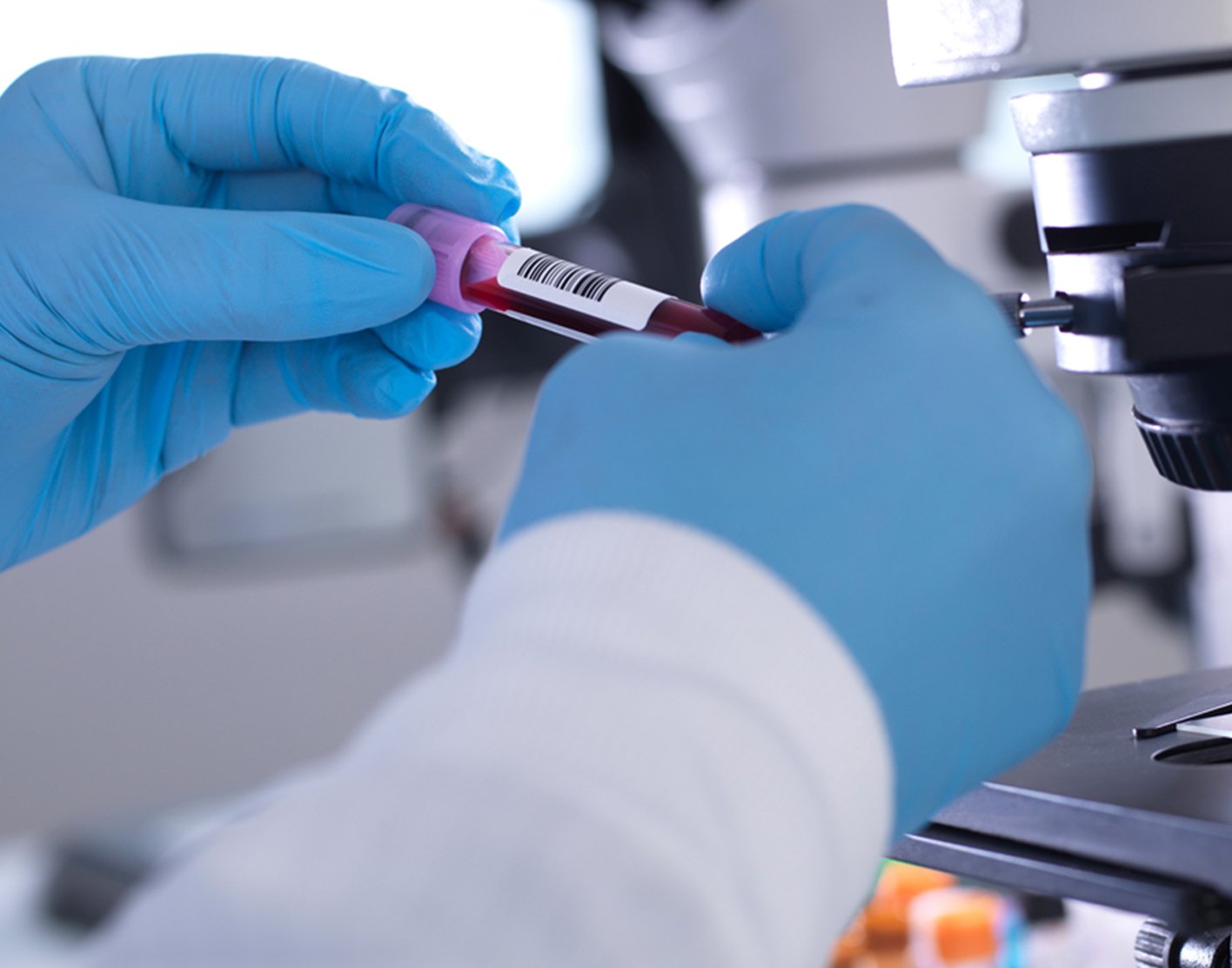
Parathyroid hormone (PTH) blood test
Definition
The PTH test measures the level of parathyroid hormone in the blood.
PTH stands for parathyroid hormone. It is a protein hormone released by the parathyroid gland.
A laboratory test can be done to measure the amount of PTH in your blood.
Alternative Names
Parathormone; Parathormone (PTH) intact molecule; Intact PTH; Hyperparathyroidism - PTH blood test; Hypoparathyroidism - PTH blood test
How the Test is Performed
A
How to Prepare for the Test
Ask your health care provider if you should stop eating or drinking for some period of time before the test. Most often, you will not need to fast or stop drinking.
How the Test will Feel
When the needle is inserted to draw blood, some people feel moderate pain. Others feel only a prick or stinging. Afterward, there may be some throbbing or slight bruising. This soon goes away.
Why the Test is Performed
PTH is released by the parathyroid glands. The 4 small parathyroid glands are located in the neck, near or attached to the back side of the thyroid gland. The thyroid gland is located in the neck, just above where your collarbones meet in the middle.
PTH controls calcium, phosphorus, and vitamin D levels in the blood. It is important for regulating bone growth. Your provider may order this test if:
- You have a
high calcium level orlow phosphorus level in your blood. - You have severe
osteoporosis that cannot be explained or does not respond to treatment. - You have kidney disease.
To help understand whether your PTH is normal, your provider will measure your
Normal Results
Normal values are 10 to 55 picograms per milliliter (pg/mL).
Normal value ranges may vary slightly among different laboratories. Some labs use different measurements or test different specimens. Talk to your provider about the meaning of your specific test results. Try to go back to the same lab each time you need to have your PTH level tested so your provider can reliably compare your results over time.
A PTH value in the normal range can still be inappropriate when serum calcium levels are high. Talk to your provider about what your result means.
What Abnormal Results Mean
A higher-than-normal level may occur with:
- Disorders that increase phosphate or phosphorous levels in the blood, such as
long-term (chronic) kidney disease - Failure of the body to respond to PTH (pseudohypoparathyroidism)
- Lack of calcium, which may be due to not eating enough calcium, not absorbing calcium in the gut, or losing too much calcium in your urine
- Pregnancy or breastfeeding (uncommon)
- Swelling or tumors (adenomas) in the parathyroid glands, called primary
hyperparathyroidism - Vitamin D disorders, including not enough sunlight in older adults and problems absorbing, breaking down, and using vitamin D in the body
A lower-than-normal level may occur with:
- Accidental removal of parathyroid glands during thyroid surgery
- Autoimmune destruction of the parathyroid gland
- Cancers that start in another part of the body (such as the breast, lungs, or colon) and spread to the bone (releasing calcium into the blood stream)
Excess calcium intake over a long period of time , usually from excess calcium supplements or certain antacids, that contain calcium carbonate or sodium bicarbonate (baking soda)- Parathyroid glands that do not produce enough PTH (
hypoparathyroidism ) Low levels of magnesium in the blood - Radiation to the parathyroid glands
Sarcoidosis and tuberculosis (usually when these conditions lead to a high serum calcium level)Excess vitamin D intake
Other conditions for which the test may be ordered include:
Multiple endocrine neoplasia (MEN) I Multiple endocrine neoplasia (MEN) II
Risks
There is little risk involved with having your blood taken. Veins and arteries vary in size from one person to another and from one side of the body to the other. Taking blood from some people may be more difficult than from others.
Other risks associated with having blood drawn are slight, but may include:
- Excessive bleeding
- Multiple punctures to locate veins
- Fainting or feeling lightheaded
- Hematoma (blood accumulating under the skin)
- Infection (a slight risk any time the skin is broken)
References
Bringhurst FR, Demay MB, Kronenberg HM. Hormones and disorders of mineral metabolism. In: Melmed S, Auchus RJ, Goldfine AB, Koenig RJ, Rosen CJ, eds. Williams Textbook of Endocrinology. 14th ed. Philadelphia, PA: Elsevier; 2020:chap 29.
Klemm KM, Klein MJ, Zhang Y. Biochemical markers of bone metabolism. In: McPherson RA, Pincus MR, eds. Henry's Clinical Diagnosis and Management by Laboratory Methods. 24th ed. Philadelphia, PA: Elsevier; 2022:chap 16.
Review Date: 29/10/2023
The information provided herein should not be used during any medical emergency or for the diagnosis or treatment of any medical condition. A licensed physician should be consulted for diagnosis and treatment of any and all medical conditions. Call 911 for all medical emergencies. Links to other sites are provided for information only -- they do not constitute endorsements of those other sites. Copyright ©2019 A.D.A.M., Inc., as modified by University of California San Francisco. Any duplication or distribution of the information contained herein is strictly prohibited.
Information developed by A.D.A.M., Inc. regarding tests and test results may not directly correspond with information provided by UCSF Health. Please discuss with your doctor any questions or concerns you may have.



























